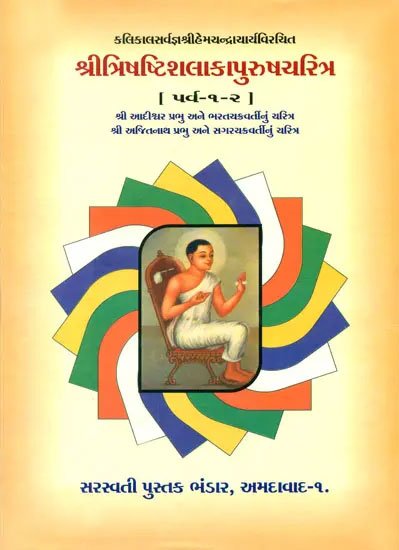Trishashti Shalaka Purusha Caritra
by Helen M. Johnson | 1931 | 742,503 words
This page describes Incarnation as Nalinagulma which is the first part of chapter I of the English translation of the Shreyamsanatha-caritra, contained within the “Trishashti Shalaka Purusha Caritra”: a massive Jain narrative relgious text composed by Hemacandra in the 12th century. Shreyamsanatha in jainism is one of the 63 illustrious beings or worthy persons.
Part 1: Incarnation as Nalinagulma
In the (inhabited) half of Puṣkaravaradvīpa[1] in the East Videhas in the province Kaccha there is a capital city named Kṣemā. Its king was Nalinagulma, always spotless because of his virtues, whose lotus-feet were rubbed by the crowns of kings. The master, the sole strong man in the world, powerful as Bahudanteya (Indra), as if with the idea, “May there be no imperfection in the realm,” made the ministers possessors of their enemies’ Śrīs[2] attracted by the power of good counsel; made the kingdom resemble a kingdom of the gods, devoid of everything unfavorable; made fortresses that surpassed the cities of the Vidyādharas on Vaitāḍhya and treasuries devoted to humiliating the wealth of Śrīda; made an army that covered the surface of the earth with elephants, horses, infantry, and chariots, and had friends ploughing the fields of his enemies’ hearts.
Wise, his mind spotless from discernment, he recognized the worthlessness of the body, youth, and wealth, even the very best. He, pure-minded, passed a certain amount of time with the kingdom, like passing a day with poor food, or a night with a poor bed. When he had cured the disease of sovereignty with the herb of enlightenment about the Principles, he took initiation at the hands of Ṛṣi Vajradatta, his mind set on dharma. Free from worldly connections, he wandered, performing severe penance, enduring the trials,[3] wearing away his body as well as karma. By the sthānas,[4] devotion to the Arhats, et cetera, described in the scriptures, he acquired firm Tīrthakṛt-body-making karma. Practicing severe penance, engaged in pure meditation, devoted to the four refuges,[5] he died in time and went to the heaven Mahāśukra.
Footnotes and references:
[1]:
See II, p. 116.
[2]:
See I, n. 1. There is probably also the idea of ‘drawn by charms’ here.
[3]:
See I, n. 55.
[4]:
See I, pp. 80 ff.
[5]:
Namely: Arhat, siddha, sādhu, and dharma. See the Prakīrṇaka Catuḥśaraṇa.
